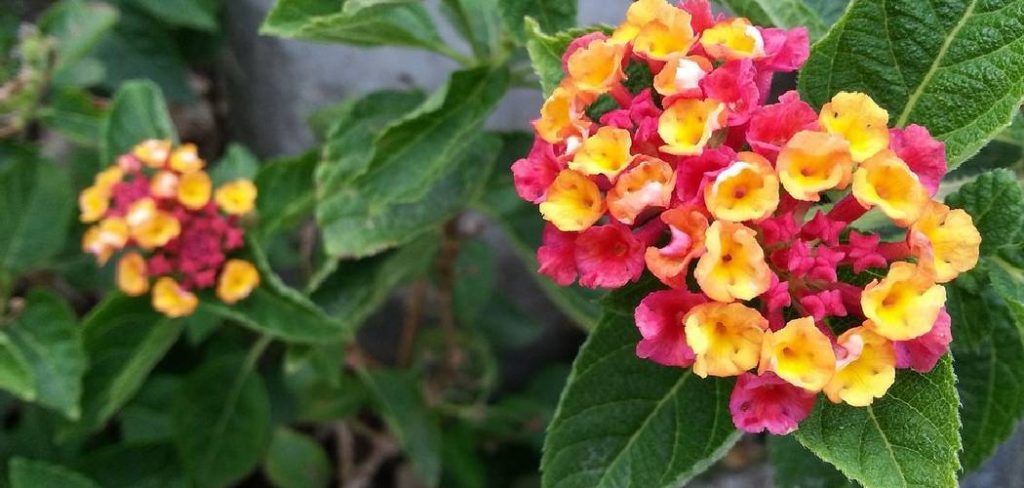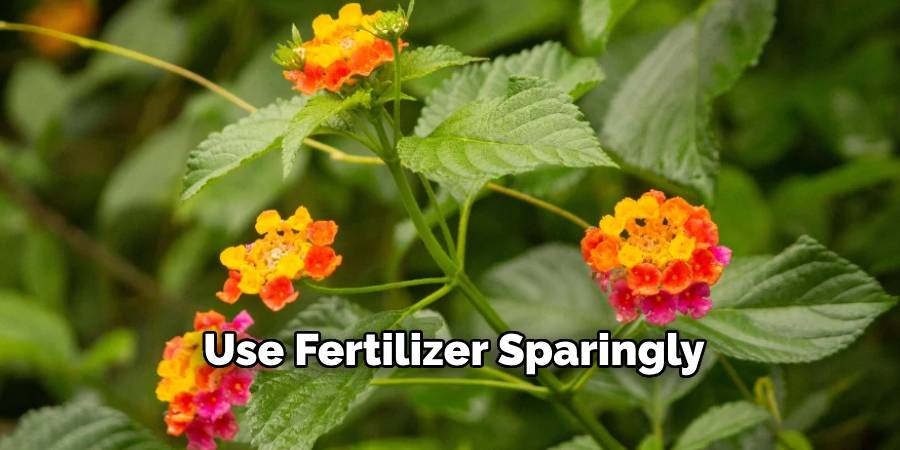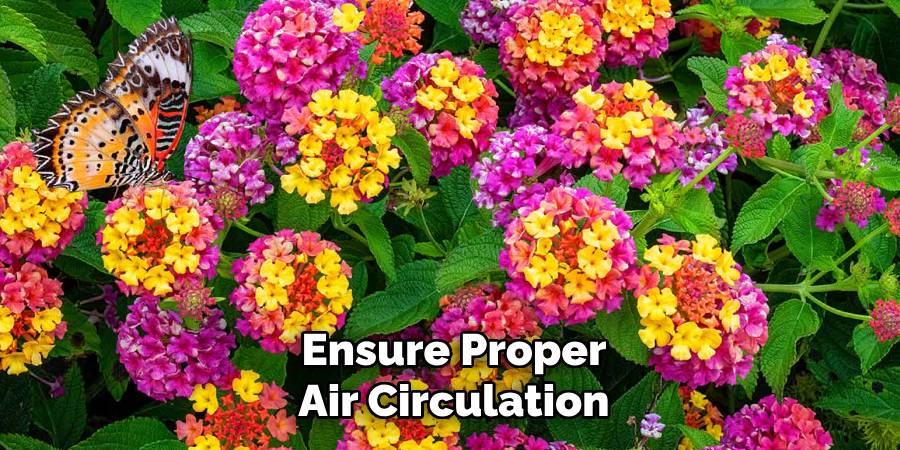Are you looking for a low-maintenance plant that can add vibrant colors to your garden? Look no further than the lantana plant! This easy-to-grow perennial is loved for its colorful flowers and ability to attract butterflies and hummingbirds.

Lantana plants are known for their vibrant clusters of flowers and their ability to thrive in a variety of conditions. These hardy, low-maintenance plants are a favorite among gardeners for their ability to attract pollinators such as butterflies and bees. While lantanas are relatively easy to care for, providing the right conditions and attention can help them flourish and enhance the beauty of your garden.
This guide on how to care for lantana plants will cover essential tips for ensuring your lantana plants remain healthy and vibrant throughout the growing season.
What Are the Benefits of Growing Lantana Plants?
Lantanas are not only visually appealing, but they also offer numerous benefits to your garden and the environment. Here are some reasons why you should consider growing lantanas in your garden:
- Attracts Pollinators: Lantanas produce bright, nectar-rich flowers that attract bees, butterflies, and other pollinators. This can help increase the biodiversity in your garden and promote healthy plant growth.
- Low-maintenance: These hardy plants can survive in a variety of conditions and require minimal care once established. They can tolerate heat, drought, and even slight neglect.
- Long Blooming Period: Lantanas bloom from late spring until fall, providing a continuous display of colorful flowers for several months. This makes them a great choice for adding color to your garden throughout the growing season.
- Versatile: Lantanas come in a variety of colors, including shades of red, orange, yellow, pink, and purple. They also come in different sizes and can be grown as shrubs or groundcovers. This versatility allows you to use lantanas in various parts of your garden to create different landscapes and add visual interest.
What Will You Need?
To grow lantanas in your garden, you will need the following materials:
- Lantana plants
- Well-drained soil
- Garden spade or trowel
- Watering can or hose
- Fertilizer (optional)
- Mulch (optional)
Once you have these materials, you can start preparing your garden for lantanas.
10 Easy Steps on How to Care for Lantana Plants
Step 1. Choose the Right Location
Lantanas thrive in locations that receive full sunlight for at least 6 to 8 hours a day. They love the warmth and bright light, which encourages vibrant blooms and healthy growth. When selecting a spot in your garden, look for areas that are not heavily shaded by trees or structures. If you live in a region with very high temperatures, providing some afternoon shade can help prevent the plants from becoming stressed. Additionally, ensure that the chosen area has good air circulation to reduce the risk of plant diseases. By picking the perfect location, you can set the foundation for your lantanas to flourish.

Step 2. Plant in Well-Drained Soil
Lantanas thrive in well-drained soil, making it essential to prepare the planting area carefully. Before planting, check the soil’s drainage by observing how quickly water is absorbed after rainfall or irrigation. If water tends to pool or drain slowly, amend the soil with organic matter such as compost or aged manure to improve its texture and drainage capabilities. Raised beds or mounded planting areas can also be an effective solution for gardens with heavy clay soil. When planting, dig a hole slightly larger than the root ball of the lantana, ensuring that the top of the root ball is level with or slightly above the surrounding soil.
Step 3. Water Regularly but Avoid Overwatering
Lantanas prefer consistent moisture during their establishment phase, typically the first few weeks after planting. Water deeply but allow the soil to dry out slightly between waterings to prevent waterlogged roots, which can lead to root rot. Once established, lantanas are relatively drought-tolerant and require less frequent watering, usually about once a week, depending on weather conditions. Always check the soil moisture level by inserting your finger about an inch into the soil; if it feels dry, it’s time to water. Be cautious not to overwater, as soggy soil can harm the plant more than brief periods of dryness.
Step 4. Use Fertilizer Sparingly
Lantanas typically do not require heavy fertilization, as too much fertilizer can lead to excessive leaf growth at the expense of flowers. Use a balanced, slow-release fertilizer sparingly during the growing season, applying it once every 6 to 8 weeks. Alternatively, you can use a diluted liquid fertilizer every 4 weeks for a gentler approach. Be sure to follow the manufacturer’s instructions to avoid over-fertilizing, which can stress the plant and reduce its overall health and vibrancy.

Step 5. Prune as Needed
Pruning is an essential part of maintaining the health and structure of your plant. Remove dead or damaged leaves, stems, and spent flowers regularly to encourage new growth and prevent disease. Use clean, sharp pruning tools to make precise cuts and reduce the risk of infection. Generally, light pruning can be done throughout the growing season, while more extensive pruning is best performed during the plant’s dormant period. Always assess your plant’s specific needs, as over-pruning can hinder growth and affect its overall vitality.
Step 6. Monitor for Pests and Diseases
Keeping a close eye on your plants helps you detect pests and diseases early, preventing them from spreading and causing extensive damage. Regularly inspect the leaves, stems, and soil for common pests such as aphids, spider mites, or mealybugs, as well as signs of fungal or bacterial infections. Look out for symptoms like discoloration, wilting, holes in foliage, or unusual spotting. If an issue is identified, take appropriate action promptly, such as using insecticidal soap, neem oil, or other environmentally friendly solutions. Ensuring proper air circulation and avoiding overwatering can also help reduce the risk of diseases, promoting a healthy, thriving garden.
Step 7. Provide Mulch for Moisture Retention
Mulching is an essential practice for maintaining soil moisture and protecting your plants. Apply a layer of organic mulch, such as straw, wood chips, or shredded bark, around the base of your plants. This helps to reduce water evaporation, regulate soil temperature, and suppress weed growth. Additionally, as the mulch breaks down, it enriches the soil with nutrients, promoting healthier plant growth. Be sure to keep the mulch a few inches away from plant stems to avoid rot and pest issues, ensuring your garden remains vibrant and well-hydrated.
Step 8. Ensure Proper Air Circulation
Proper air circulation is vital for maintaining plant health and preventing the buildup of moisture that can lead to diseases such as mildew or fungus. To ensure good airflow, provide adequate spacing between plants when planting, and regularly prune any overcrowded or overlapping foliage. If you’re using containers, consider rotating them occasionally to create more even exposure to air. Additionally, keeping your garden area weed-free helps to reduce competition for air and space.

Step 9. Deadhead Flowers
Deadheading flowers is a simple yet essential gardening practice that promotes healthy growth and encourages plants to produce more blooms. By removing spent or faded flowers, you prevent the plant from using its energy to produce seeds and instead redirect that energy toward creating new flowers. To deadhead, simply pinch or cut off the dead flowers just above a leaf or bud using clean pruning shears or your fingers. Regularly deadheading throughout the growing season will keep your garden looking vibrant and can even extend the blooming period for many flowering plants.
Step 10. Protect During Frost
Protecting your plants during frost is essential to ensure their survival and health in colder temperatures. Start by covering sensitive plants with frost cloths, blankets, or sheets to trap heat and shield them from cold air. Make sure the coverings reach the ground to fully insulate the plants. For potted plants, consider bringing them indoors or placing them in a sheltered location such as a garage or porch. Watering the soil around your plants before a frost can also help retain heat. Additionally, using mulch around the base of your plants provides an extra layer of insulation for the roots. Being proactive and prepared can protect your garden from frost damage and keep your plants thriving through the season.

By following these simple steps, you can ensure your lantana plants remain healthy, vibrant, and full of colorful blooms throughout the growing season.
5 Things You Should Avoid
- Overwatering
Lantana plants are drought-tolerant and thrive in well-drained soil. Overwatering can lead to root rot and fungal diseases, which may harm or kill the plant. Always allow the soil to dry out slightly between waterings.
- Using Too Much Fertilizer
Lantanas do not require heavy feeding. Over-fertilizing can result in excessive foliage growth at the expense of flowers, reducing the plant’s overall beauty. Use a balanced, slow-release fertilizer sparingly to maintain healthy blooms.
- Planting in Poorly Drained Soil
Lantanas prefer well-drained soil and can struggle in waterlogged conditions. Avoid planting them in areas with poor drainage or heavy, compacted soils to prevent stress and root issues.
- Pruning Too Aggressively
While pruning helps maintain the shape and encourage blooms, cutting lantanas back too harshly can hinder their growth. Trim them lightly to remove deadheads and maintain their natural bushy appearance.
- Ignoring Pest Problems
Though lantanas are generally pest-resistant, they can still attract pests like whiteflies and aphids if neglected. Regularly inspect your plants and address any infestations promptly with appropriate pest control methods to keep them healthy.
Conclusion
How to care for lantana plants involves attention to their specific needs to ensure they thrive in your garden.
By providing plenty of sunlight, well-draining soil, and appropriate watering, you can create the ideal environment for these hardy plants. Regular pruning helps to maintain their shape and encourages blooming, while addressing pest issues promptly ensures their continued health.
With proper care, lantanas can bring vibrant colors and beauty to your outdoor spaces year-round.
About
Jennifer Branett is a distinguished figure in the world of Garden design, with a decade of expertise creating innovative and sustainable indoor solutions. His professional focus lies in merging traditional craftsmanship with modern manufacturing techniques, fostering designs that are both practical and environmentally conscious. As the author of garden, Jennifer delves into the art and science of garden-fix, inspiring artisans and industry professionals alike.
Education RMIT University
(Melbourne, Australia) Associate Degree in Design (Jennifer Branett) Focus on sustainable design, industry-driven projects, and practical craftsmanship. Gained hands-on experience with traditional and digital manufacturing tools, such as CAD and CNC software.
Nottingham Trent University
(United Kingdom) Bachelor’s in Garden and Product Design (Honors) Specialized in product design with a focus on blending creativity with production techniques. Participated in industry projects, working with companies like John Lewis and Vitsoe to gain real-world insights.Publications and Impact
In indoor, Jennifer Branett his insights on Garden design processes, materials, and strategies for efficient production. His writing bridges the gap between artisan knowledge and modern industry needs, making it a must-read for both budding designers and seasoned professionals.
